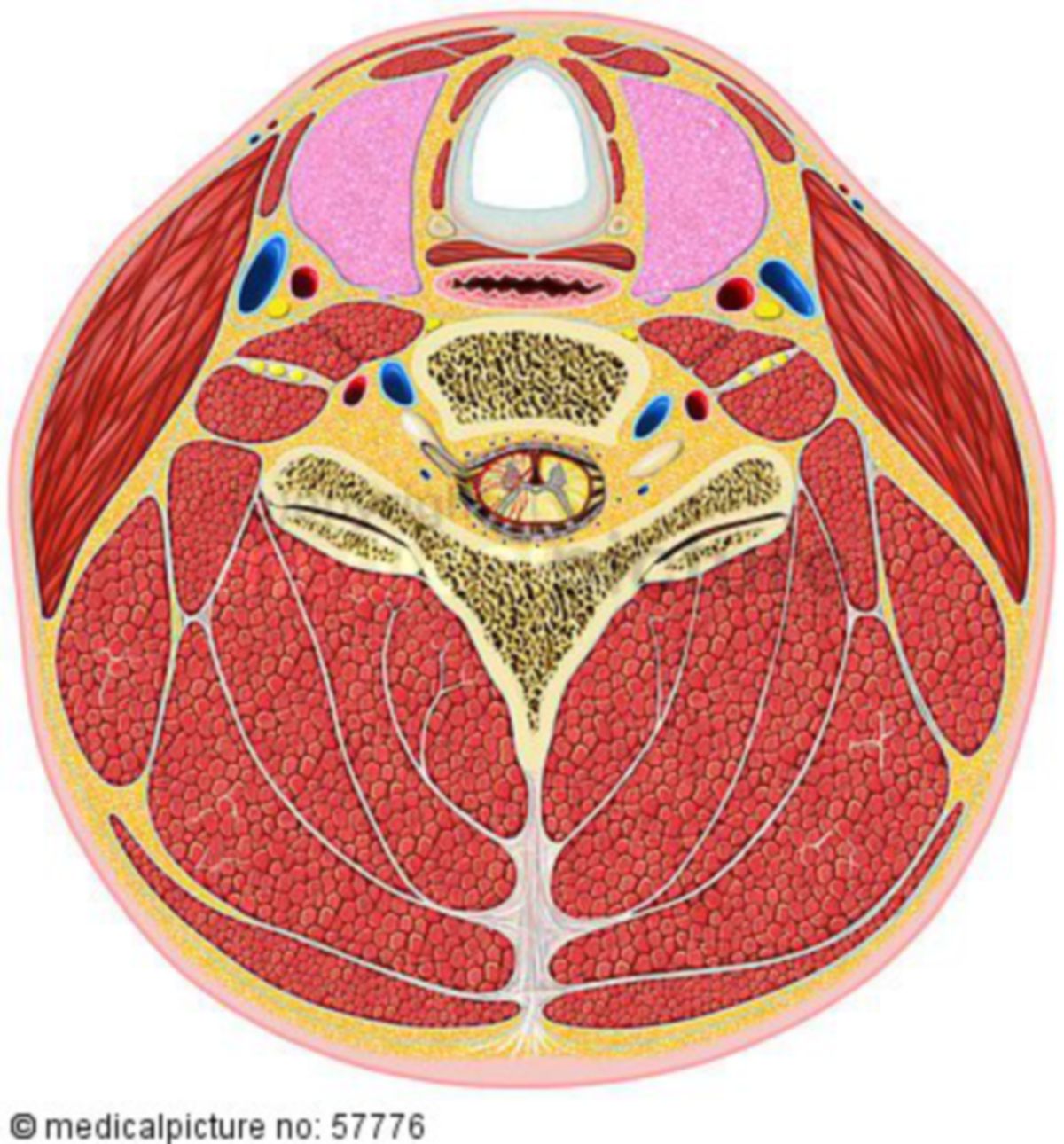Corpus: Neck
2. Anatomy
2.1. Overview
The neck contains multiple layers of muscles that support the static and dynamic movement of the head. Additionally, it houses essential structures for nourishment (esophagus), respiration (larynx, trachea), blood supply (carotid artery, internal jugular vein), and nervous communication (spinal cord, cervical plexus, cervical nerves). The vocal cords, located in the larynx, are crucial for voice production.
The thyroid gland and the parathyroid glands are also located in the neck, situated in front of the larynx.
2.2. Topography
The upper boundary of the neck is defined by a line connecting the lower edge of the mandible to the mastoid process and the superior nuchal line of the occipital bone. The lower boundary is defined by a line extending from the manubrium of the sternum, across the clavicle, and the acromion of the scapula, to the spinous process of the 7th cervical vertebra.
The neck can be broadly divided into the anterior, lateral, and posterior regions. The anatomical regions of the neck, also known as the cervical regions, provide a detailed framework for describing the location of structures or pathological changes with precision.
| Latin | English | |
|---|---|---|
Regio cervicalis anterior
|
Anterior cervical region
|
|
Regio sternocleidomastoidea
|
Sternocleidomastoid region
|
|
Lateral cervical region
|
Lateral cervical region
|
|
| Posterior cervical region (regio nuchae) | Posterior cervical region (neck region) | |
2.3. Bones
The bony framework of the neck is formed by the cervical spine, which consists of seven cervical vertebrae. Among these, the first cervical vertebra (atlas) and the second cervical vertebra (axis) are particularly distinctive due to their unique shapes and functions.
2.4. Organs
The organs located in the neck are collectively referred to as the cervical viscera. These include:
- Esophagus (gullet)
- Trachea (windpipe)
- Thyroid gland
- Larynx (voice box)
- Pharynx (throat)
The pharynx and esophagus transport food from the oral cavity to the stomach, while the trachea channels the air we breathe into the lungs. The larynx coordinates and separates these pathways and is responsible for voice production. The thyroid gland, located in front of the larynx, produces the thyroid hormones T3 and T4, which are crucial for regulating metabolism.
2.5. Musculature
The statics and movement of the neck are ensured by the various layers of the neck musculature, as well as in the dorsal area by the neck musculature.
2.6. Fasciae
The soft tissues of the neck are surrounded by a multi-layered fascial system, the cervical fasciae. A distinction is made between superficial, middle and deep cervical fascia. In addition, the large vessels of the neck are surrounded by their own fascia, the carotid vagina.
2.7. Vascular tracts
The neck houses large parts of the trachea and oesophagus as well as other important anatomical pathways, including the cervical vessels, nerves of the cervical plexus and brachial plexus and the spinal cord. Examples are
- Carotid artery
- vertebral artery
- Internal jugular vein
- External jugular vein
- Vertebral vein
- Vagus nerve
- Laryngeal recurrent nerve
3. Sources
- 3D model: Dr Claudia Krebs (Faculty Lead) University of British Columbia



